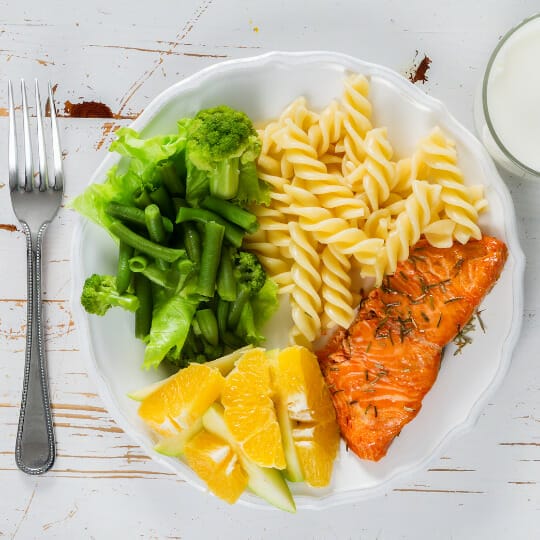
I was recently asked, ‘How do you coach around nutrition and eating habits without being an expert’? Today I’ll illustrate a few ways to do this with some examples.
Let’s say a client comes to you and wants to be told what to eat, and whether she should follow a diet plan.
A good starting point is to ask what the client already knows and acknowledge why that matters to them – what is behind this change in eating and how will that impact their life? Their answers may reveal some important values that will help them to create a compelling vision.
Next, you would explore what they know already about healthy eating. Most clients have a reasonable amount of knowledge – just not how to fit it into their busy lives. But if your client doesn’t know much, you might point them to relevant guidelines, or refer them to a professional who is qualified to help.
The most important thing is that you are not here to educate clients or tell them what to do. Instead, your role is to draw out what your client knows and help them make sense of it, identify any knowledge gaps that require a referral, and otherwise help them to create safe and effective goals to achieve their vision.
Let’s say your client isn’t clear about portion sizes or serving sizes but sees this as an important part of eating well. How do you tackle that?
Firstly, there are published guidelines on these aspects that you can share with a client. The way to introduce them is to ask permission – would you be interested in looking at the guidelines on portion sizes and serving sizes?
In sharing the information, you can ask the client questions that will raise their self-awareness. These might include questions like:

There is much to be learnt about healthy eating and there is also a lot of misinformation out there. Your job is to support your clients as they consider changes they may make, provide well-documented information when required and step in if they are planning to set goals that are unsafe in any way.
People might want to change their eating habits and diets for many reasons including to reduce arthritis or other inflammatory conditions, to lower blood pressure, or address a chronic illness like type 2 diabetes or an autoimmune condition, or to boost their energy.
But a lot of clients who want to change their eating habits are concerned about weight loss, either as a stand-alone concern, or coupled with one of the other aspects.
So how do you have conversations about plateaus, popular diet trends and supplements?
The starting point is always about finding out what the client knows already, and what their perception is about this area.

What do they know about this diet trend or supplement, its safety and efficacy?
Or in the case of a plateau, what do they know about energy balance?
What is attractive about the solution they’ve found?
And what’s behind that?
Often clients are drawn toward things that seem to offer a quick solution to their challenges. Unpacking conversations can reveal underlying fears, concerns or motivators, and awareness of these can lead a client to reasonably assess whether their thought processes are helpful.
If there are any remaining concerns or desires to try certain approaches, you can easily refer a client to a doctor or dietician for more specific advice.
But often, you get the chance to turn the conversation back toward the longer-term goals, the sustainable habits they are doing, how they feel about the habits, and also, basic principles about mindful eating and tuning into natural hunger and satiety signals.
You may invite a client to watch their thoughts and/or track their responses to food, any ‘rules’ they set around eating, how they feel in social eating settings, what thoughts they have about other people’s results etc. In doing this self-reflection, the client can learn the valuable skill of critical thinking to help them work out for themselves if they have legitimate concerns or not.
A little information and some self-reflection can be used to help your clients develop the skill of understanding what their bodies are telling them so that they can self-regulate their behaviour more easily.
Two key drivers of unhealthy eating habits and weight concerns are stress, and faulty thinking patterns that lead to unhelpful feelings and beliefs. In that sense, while the initial work in weight loss coaching is around more superficial topics like what to eat and how to get organised, the deeper work for lasting change is around the individual’s ability to set boundaries and manage their lives and their emotions.
Today I shared three examples of how to coach around nutrition. We covered:
We’ve only just skimmed the surface of weight loss coaching, but these are three common questions that I have been asked by coaches who want to coach clients around nutrition and eating habits.
I hope this episode was useful. Please subscribe to my podcast on iTunes and I’d appreciate your rating and feedback if you are enjoying this!
Understanding who you are and what you need will allow your business to thrive! If you’re truly ready to break old habits and get out of the rut I encourage you to check out the Habitology membership.
Learn more here:
© 2024 Melanie White